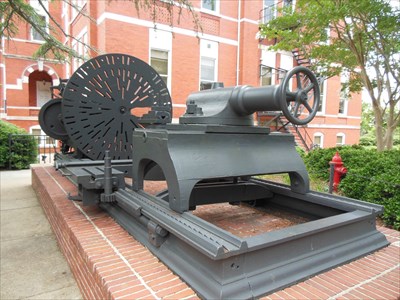Background: The informant is a 58 year old man living in Chicago, Illinois. He grew up in Libertyville, Illinois, where he attended the local high school and elementary school. He went to college at the University of Illinois in Urbana-Champaign (currently UIUC – referred to as U of I by the informant). The informant always likes to tell jokes and mentioned one that was prevalent during his time at college.
Context: The context was while eating, the informant and his son began talking about U of I, as they both attended the school. The informant suddenly appeared to remember a joke he was told as a student.
Text:
BW: Yeah, I remember this one joke I was told at U of I. It was really popular around all the students. I remember my friend group would always share it. So, there’s the alma mater statue at U of I that all students take pictures at when they graduate. Remember we took a picture with [son] there.
Me: Yeah, it was a statue of a woman, right?
BW: Yep, a motherly figure, and she’s standing up. Okay so it goes,
Everyone at U of I takes a picture in front of the alma mater statue and, um, if there is a picture of a virgin in front of the statue, then she will be sitting down instead of standing. But, see, there are no virgins at U of I, because everyone has been fucked by the University. [laughing].
Me: Oh, wow. Was there any ill will toward the University?
BW: I think it was like the usual anger of students towards their schools. Maybe it be the cost or the classes or being failed in a class, or something like that.
Analysis:
Informant: The informant, laughing at his own joke, shows that it retains its humor for him throughout the decades. It clearly brings back memories of his time at the university and of good humor between him and his friends.
Mine: The joke, while short, represents a few things. First, it directly mentions a graduation tradition done at the school, of taking a picture with the alma mater statue once someone graduates. However, this tradition is turned on its head for vulgar means – more so because the statue is depicting a motherly figure. However, moms have long had their share of mom jokes, notably “your mom” in response to a statement. The statue sitting down upon a virgin being there is almost like the motherly statue sitting down to protect the virgin, as if a mother’s embrace. But then, the punchline hits, and while it’s meant to be funny, it serves to actually highlight how the students felt about the university. While not sure if the joke is still being told, it clearly is a symbol that this time of history, in the 80s, was a period where the university was clearly mocked.

